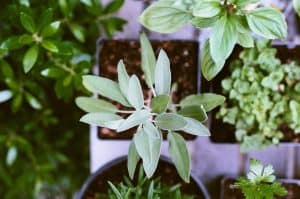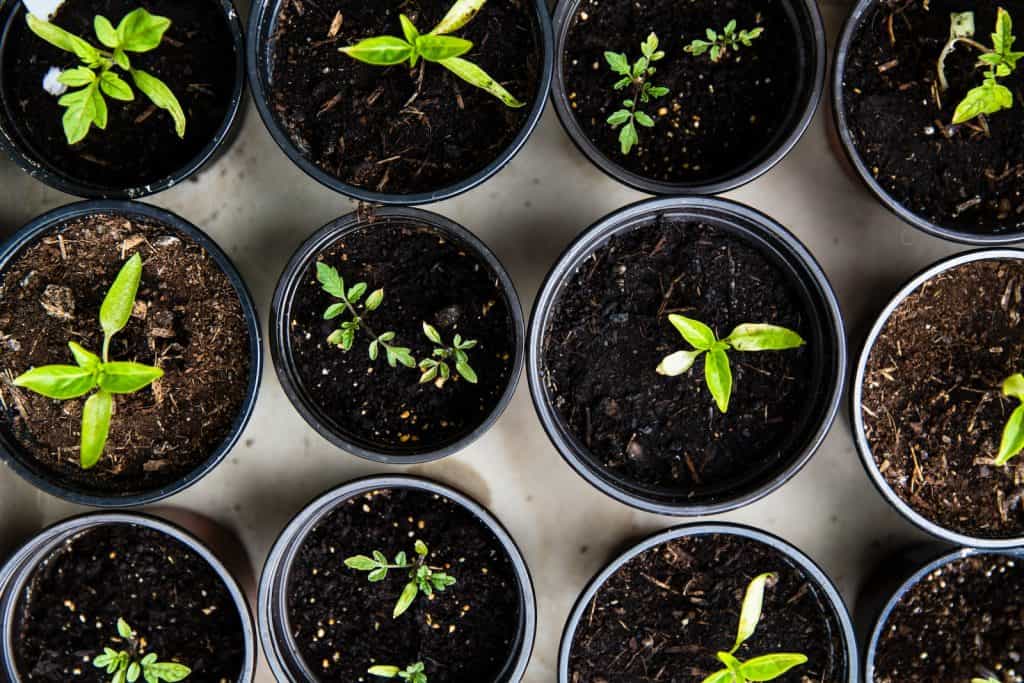If you’re like me, you love the taste of fresh herbs in your meals. But let’s face it, store-bought herbs can be expensive and they don’t always last long. That’s where indoor herb gardens come in. They’re a great way to have fresh herbs at your fingertips, without the hefty price tag or waste.
Indoor herb gardens are designed to be easy to use, even for beginners. Some can hold up to 12 pods, making them perfect for those who want a variety of herbs. And the best part? You don’t always need to use proprietary seeds or pods. Some brands even offer adjustable light panels and smart timers to ensure your herbs get the right amount of light and water.
Whether you’re a seasoned gardener or just starting out, a diy indoor herb garden could be the perfect addition to your kitchen. It’s not just about the convenience, it’s about enjoying the process of growing your own food. So, let’s delve into the world of indoor herb gardening and see what it has to offer.
Indoor Herb Garden Ideas: 10 Kitchen Planting Hacks
Let’s dive in and explore some effective strategies to start and maintain your indoor herb garden. These kitchen planting hacks are not only practical, but can significantly improve the success and the yield of your harvest.
1. Pick the Right Plants
When initiating your herb garden, it’s crucial to choose the right plants – particularly ones that align with the meals you love to cook and the herbs that complement those dishes. Are you growing these herbs as a handy culinary ingredient, or simply to add to your indoor botanical collection?

Furthermore, consider the conditions of your home. If it’s on the cooler side, favor cold-tolerant herbs like chervil, chives, mint, oregano, parsley, sage, and thyme. Remember, while most herbs require bright light, herbs like chervil, chives, and parsley, along with plants in the mint family, display remarkable tolerance towards lower light levels.
2. Select a Container with Drainage
Getting a practical container with sufficient drainage is essential for thriving herbs. Soggy soil conditions can be fatal to herbs, especially those native to the Mediterranean climate. When growing rosemary, thyme, oregano, and bay laurel, blend equal parts of cactus mix and regular potting soil for best results. On the other hand, herbs like basil and mint prefer regular potting soil.
3. Choose the Sunniest Spot
Herbs love sunlight. They soak it up and use it to create the savory flavors we love. A south-facing window can work wonderfully. But if you don’t have such a window, full-spectrum grow lights can do the trick. Try to situate your herbs within 12 inches of the bulbs for optimal light absorption, adjusting as needed based on your particular light setup.
4. Water—But Not Too Much
Watering is an art. Give your plants enough to hydrate, but not so much that they wallow and suffocate in dampness. Overwatering in a pot with poor drainage is a surefire way to kill your herbs. Pots with good drainage holes keep roots from sitting in excess water, protecting your plants from root rot.
5. Harvest a Little at a Time
Don’t be greedy with your herbs. Harvesting a little at a time not only allows your plants to recover but also encourages growth. Taking leaves from the top encourages the plant to sprout at the bottom, making it bushier, so you’ll have a more bountiful harvest.
6. Transplant When Ready
If you’ve started with seedlings or if your current plant has outgrown its space, you’ll need to consider transplanting. Always ensure the new pot has ample space for your herb to spread out. When transplanting, carefully loosen the root ball from the pot before placing it in the new container.
Indoor Herb Garden Ideas That Don’t Need a Windowsill
Have you ever wished you could grow herbs in your kitchen but ruled out the idea due to a lack of sunny window space? I’m here to tell you that it’s possible. Thanks to adaptive and innovative gardening solutions, you can now cultivate herbs indoors, without reliance on a windowsill.
One such indoor herb garden innovation is the mason indoor herb garden kit. Designed to maximize utility and aesthetics, these compact, reusable mason jars allow for herbs to thrive in limited space. They’re not just functional; these vintage-inspired smart garden jars can also double as décor items. Here’s how it works: the self-watering system nourishes the plants’ roots using a process known as wicking, this basically means that even without a windowsill, fresh herbs are within your reach!
The mason jars come equipped with a basic set of basil and parsley. However, you can customize the herb duo per your preference and the site availability. Choices such as Basil & Mint, Basil & Cilantro, or Lavender & Rosemary are a hit amongst herb enthusiasts.
Move over massive indoor gardens, size does not always matter! Admittedly, these visually stunning mason jars are larger than they appear in photographs. They may seem a bit cumbersome if you’re dealing with counter space challenges. But they more than compensate with their elegance and natural appeal. Imagine lush herbs spilling over the edges! Bonus: it’s not just a feast for the eyes. The soothing aroma of fresh herbs will invigorate your senses. Over time, I’ve come to appreciate these mason jar gardens for their obvious and subtle beauties.
Owning a garden becomes a breeze with these practical, yet aesthetic mason jars. Affordable and space-conscious, they prove to be an attractive solution for indoor gardening woes. So why wait? It’s time to turn your kitchen into a mini herb paradise, minus the sun-drenched windowsill.
How Do Indoor Herb Gardens Work?
Most indoor herb gardens are simple to operate. Indoor herbs often compared to using a Keurig or Nespresso machine. Just insert a pod or cartridge, add water, and power it up. Some systems let you choose your seeds, others come with seeds already embedded in the pods. While some may need a bit of extra work, like adding plant food twice monthly, overall, the effort is minimal.
Most units alert you when water or food is needed. This can be a flashing button, screen signal, or even a mobile app notification. Although these systems claim to be foolproof, maintenance is crucial. They can’t be set up and forgotten; a nominal level of care is needed.
A new player in the market, Veritable Smart Indoor Garden, challenges traditional indoor gardens’s method of water and light management. Avoiding scheduling requirements through an app, this indoor garden operates on a preset lighting schedule and self-levels water from a reservoir. It’s a less tech-intensive indoor garden solution allowing for effortless care and maintenance.
The Best Indoor Herb Gardens
So, you’ve made it through the ins and outs of indoor herb gardening. It’s clear that with the right strategies, anyone can create a lush, aromatic mini garden right in their kitchen. Whether you’re starting with a few potted herbs on your windowsill or opting for innovative systems like the DIY mason jar kit or the Veritable Smart Indoor Garden, success lies in selecting the right herbs, providing proper care, and harvesting wisely.
Remember, it’s not just about the fresh, organic produce. It’s also about the joy of nurturing life and the aesthetic appeal these indoor herb gardens offer to your home. Don’t be afraid to experiment and learn. After all, every great gardener was once a beginner. So, why wait? Turn your kitchen into a thriving herb paradise today!

